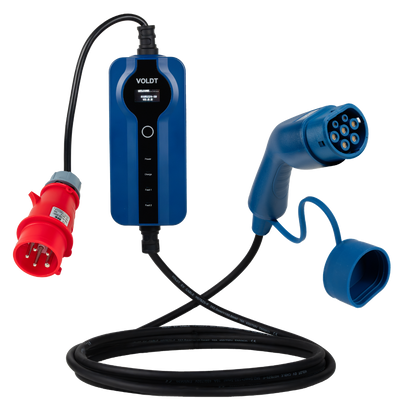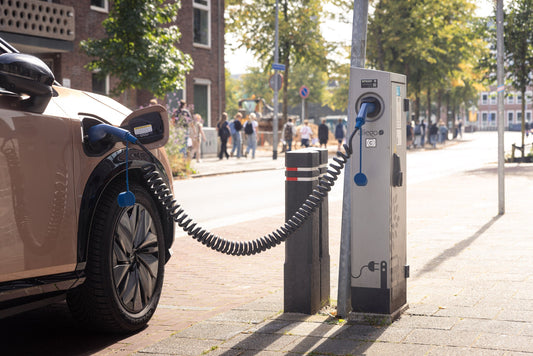1. What Causes EV Battery Degradation
Electric vehicle batteries degrade through two confirmed mechanisms. Calendar aging happens naturally over time as the internal chemistry of the cells changes. Cycle aging occurs through repeated charging and discharging as part of everyday driving. High temperatures, extended periods at high or low state of charge and charging a warm battery all accelerate these processes. Parking in direct sunlight or storing an EV with a full or nearly empty battery also increases long term wear. While manufacturers use battery management systems to regulate temperature and protect the pack, driver behaviour still plays a major role in how quickly capacity declines. Understanding these fundamentals helps ensure your charging habits support long term stability, something central to the approach of Voldt®.
2. Optimal Charging Habits to Maximise Battery Lifespan
Keeping the battery between 20 and 80 percent charge is widely recommended for longevity. Many EVs allow charge limit settings that help avoid unnecessary full charges. AC charging delivers the most stable and predictable power curve, and using a high quality type 2 charging cable provides consistent, low heat charging. This supports healthier cell chemistry over time. DC fast charging remains useful when needed, but frequent use increases thermal load and speeds up aging. Owners of vehicles with a Type 1 inlet can rely on a certified Type 1 cable for the same stable connection. Choosing dependable, well engineered charging equipment is an effective way to promote long term battery health without altering your routine.
3. Temperature Management to Protect the Battery
Temperature strongly influences battery degradation. High heat accelerates chemical reactions that cause faster aging, while cold temperatures reduce charging efficiency until the battery warms. Parking in shaded areas or garages helps limit unnecessary heat exposure. If your EV supports preconditioning, enabling it before charging prepares the battery for optimal performance. Allowing the battery to reach a moderate temperature before plugging in, supported by a stable type 2 charging cable, helps maintain consistent charging behaviour. Avoiding extreme temperature environments whenever possible is one of the simplest and most effective ways to protect the pack.
4. Driving Behaviour and Its Impact on Battery Health
Driving style influences battery temperature and long term cell stability. Hard acceleration, sustained high speeds and repeated high power demand generate more heat and place greater stress on the pack. While thermal management systems regulate temperature, consistent high load driving increases cumulative wear. Smooth acceleration, moderate speeds and steady regenerative braking help maintain predictable energy flow and lower operating temperatures. This kind of balanced driving does more than improve efficiency; it directly supports the long term health of the battery itself.
5. Long Term Storage and Daily Use Habits
When storing an EV for several days or weeks, keeping the battery at around 40 to 60 percent is ideal for long term preservation. Leaving the battery fully charged or near empty for extended periods increases internal stress. Checking the vehicle occasionally ensures the charge level remains within a safe range. Parking in a temperature stable environment such as an indoor garage provides further protection. During everyday use, routine AC charging with a high quality type 2 charging cable ensures a stable power supply. Reliable, well engineered cables offer consistent performance that aligns with manufacturer recommendations for battery health.
6. The Importance of High Quality Charging Equipment
Charging equipment contributes directly to the stability and safety of every charging session. High grade cables with durable materials and weather resistant connectors ensure dependable operation in all environments. Certified products such as a Type 2 cable or Type 1 cable maintain stable power delivery that allows the battery management system to regulate charging effectively. Voldt® EV charging cables use 100 percent silvered copper conductors, while cheaper alternatives often use copper alloy. Pure silvered copper reduces resistance and therefore decreases heat development during charging, promoting optimal battery conditions. Choosing reliable equipment from trusted manufacturers like Voldt® is a practical step toward maintaining long term performance.
7. Summary of the Best Ways to Reduce Battery Degradation
-
Keep the battery between 20 and 80 percent for everyday use.
-
Charge primarily with AC using a stable type 2 charging cable.
-
Limit frequent DC fast charging whenever possible.
-
Avoid charging when the battery is extremely hot or cold.
-
Park in shaded or temperature controlled areas.
-
Store the vehicle at mid charge when unused for long periods.
-
Use certified Type 1 and Type 2 cables from quality brands such as Voldt®.
These recommendations align with manufacturer guidance and modern battery research. Combined with dependable charging equipment, they help ensure your EV battery remains healthy and efficient for many years.













